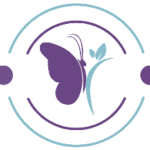Trauma Recovery Empowerment Model
Program Overview
According to The California Evidence-Based Clearinghouse for Child Welfare (2023), TREM is a program "for women who have a history of sexual, physical, and/or emotional abuse and can have severe mental health problems and frequent co-occurring substance abuse issues." On the scientific rating scale, it is currently rated as "3 - Promising Research Evidence".
TREM is divided into three main parts. The first part focuses on helping individuals build inner strength and teaches them how to take care of themselves. In this section, participants learn how to manage their emotions, practice self-care, and establish healthy boundaries to protect themselves.
The second part delves deeper into understanding the traumatic experiences and how they have affected the participants. It provides a space for individuals to explore their feelings and thoughts about these experiences.
The final part of TREM is all about developing practical skills. Participants learn effective communication, decision-making, and coping strategies to manage strong emotions. They also learn how to build healthier and more balanced relationships with others.
TREM serves as a guide to support individuals in becoming stronger, gaining insights into their emotions, and acquiring valuable life skills to enhance their relationships and overall well-being.
Goals of TREM
- Increased trauma recovery skills
- Increased self-esteem
- Increased boundary-setting
- Increased emotional regulation
- Increased judgment and decision-making
- Decreased mental health symptoms
- Decreased anxiety
- Decreased depression
- Decreased hostility
- Decreased post-traumatic stress disorder (PTSD) symptoms
- Decreased substance abuse

